Anglers Booking Team
The expert copywriters at Anglers Booking have meticulously crafted this article. Our dedicated team of writers provides valuable insights and information to enhance your angling experience.
 9 minutes read
9 minutes readFishing at all levels is a place of constant innovation and creativity, and new techniques are always hatching somewhere for new challenges and excitement.
But some old, primitive techniques, which some would say are no longer attractive to anyone, are often on par with the most modern! It's the same when it comes to gigging! It is nothing more and nothing less than fishing with a good old spear!

And no, don't confuse this with spearfishing because here, the spear is not ejected from an air rifle but is thrown by hand! And yes, it is still popular today and is used to catch smaller fish species near the surface or bottom of the water.
Known for its simple but effective method of hunting, which relies on direct physical contact with the fish, this technique still inspires the admiration and enthusiasm of many anglers today!
For all those who are always looking for new fishing challenges or simply something new to learn, we have created this guide to gigging, in which we will explore its application and give valuable tips on equipment and techniques that will help you perhaps try your hand at this always young fishing technique!
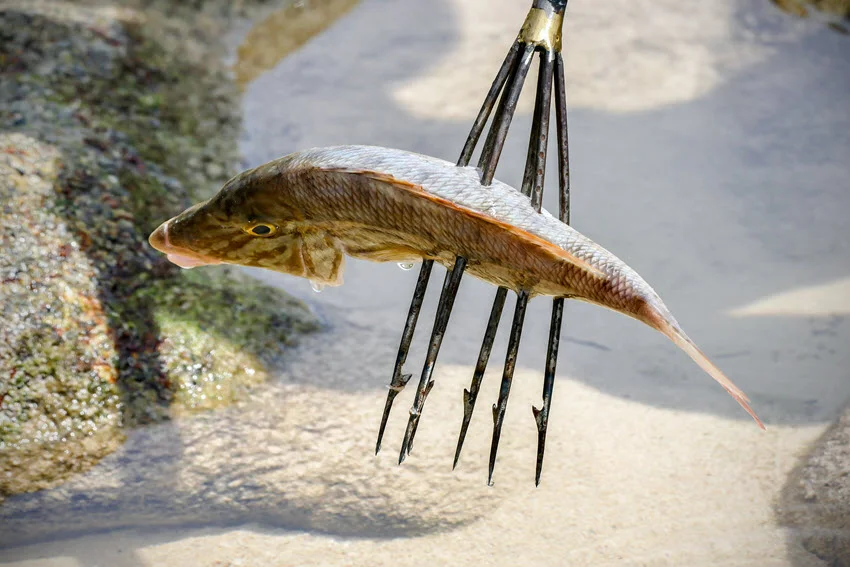
In this fishing technique, everything revolves around the gig, a spear with multiple blades for direct fishing. It is primarily used for catching fish in shallow waters, usually at night, where the anglers use a gig to hook fish that are close to the surface or on the bottom of the water.
This technique is often followed with the help of light sources, such as lamps or reflectors, which attract the fish and make them more visible. This light effect can be the key to success in gigging because, besides attracting the fish, it allows the angler to locate and catch them precisely. Of course, you can also throw a gig during the day, and the key is to have as sunny and beautiful weather as possible.
The essential characteristic of this technique is its simplicity, but it also requires skill and precision. The angler must be able to use the gig effectively, which involves quickly and accurately positioning the blades to hit the fish. The technique allows direct physical contact with the fish, which can be exciting and challenging, but with practice, it becomes a reliable and effective method of fishing.
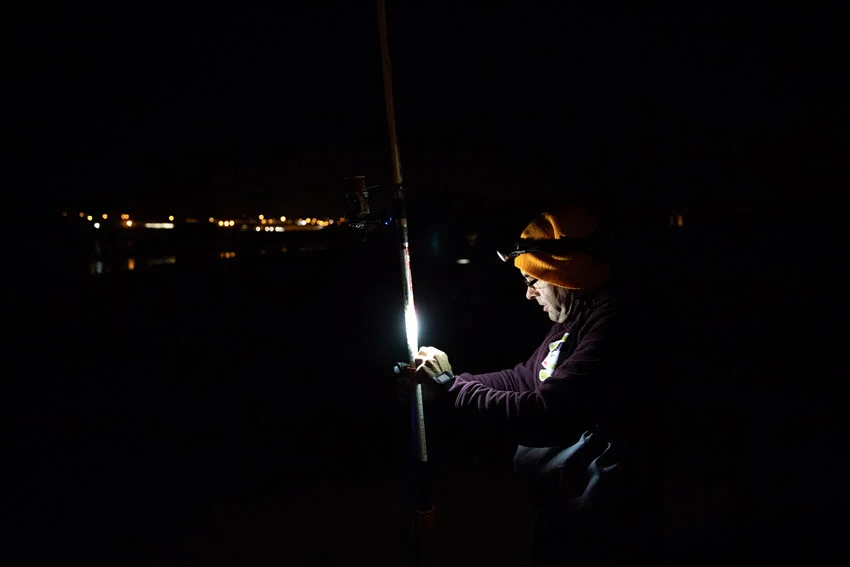
Although ancient, gigging is still a unique fishing technique that offers numerous advantages for anglers looking for exciting and effective hunting methods. It enables direct physical contact with the fish using a specialized spear, which can be an extremely satisfying and exhilarating experience, awakening the angler's predatory, deep animal urges.
It is particularly effective in shallow waters and can be used at night, which also adds to the attractiveness of this method.
Also, gigging does not require a rod or bait, which simplifies the preparation and can reduce costs. The technique is primarily masculine but sophisticated, increasing the adrenaline flow. The flexibility enables application in different water bodies and conditions, inspiring anglers to experiment and adapt their skills to various environments.
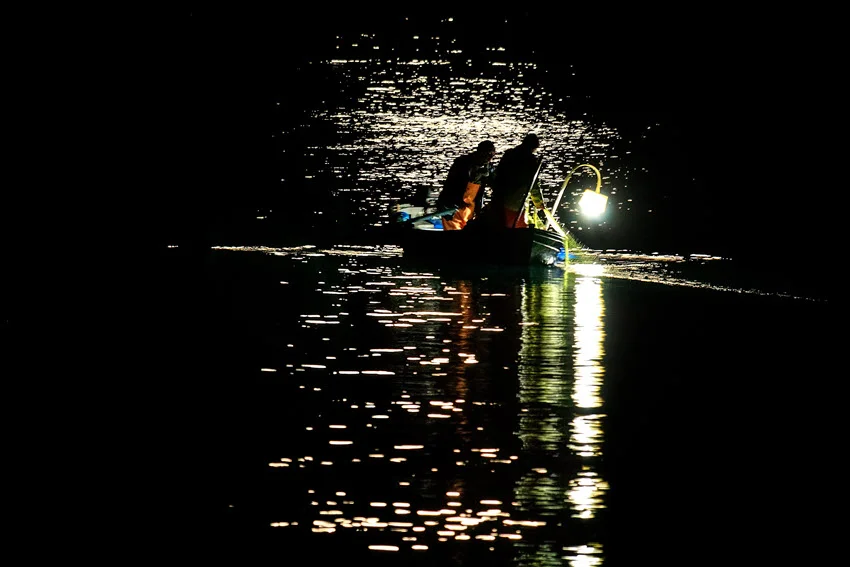
The primary condition is good lighting and visibility, whether in daylight or at night, with various types of specialized lights. Gigging is ideal for shallow waters, usually up to a few meters deep, where fish often stay near the surface or on the bottom. It is suitable for calm waters with minimal currents or waves because strong water movement can make it difficult to control the gig.
This technique is beneficial for catching certain types of active fish near the surface or on the bottom, such as Bass, Catfish, and fish caught in shallow water. Often gigging is an occasional attraction for showing off in tournaments or ceremonies, although there are also anglers who do not give up this technique on an everyday basis.
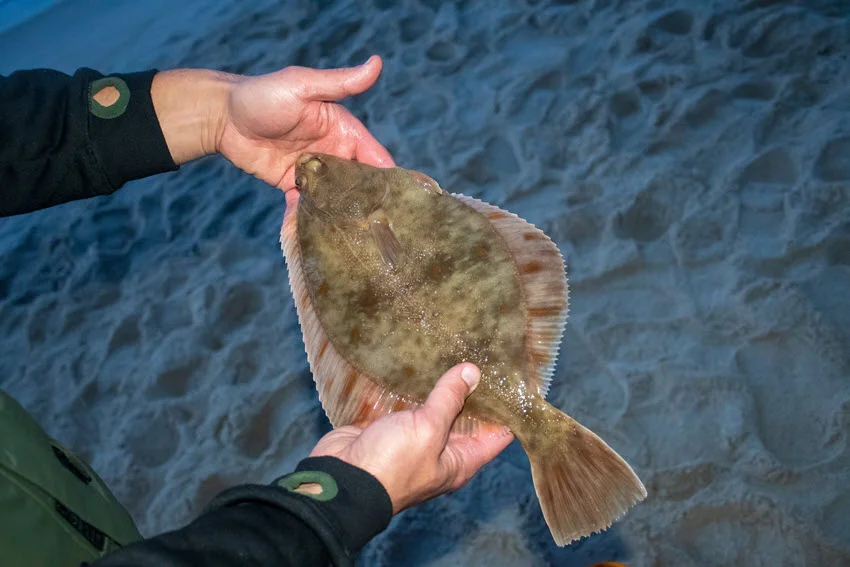
In theory, you could also throw a gig from a ship or shore into deeper water, but it would take a lot of work to get a catch. This technique targets fish that live very close to the shore, in the shallows and the immediate vicinity or are attracted to shallower waters at certain times of the day or night.
Catfish: Catfish are often found in shallow, murky waters and are relatively easy to spot with a spear, especially at night when artificial light is used. And they are big enough that it is really hard to miss them.
Flounder: Famous fish have their own specific subspecies of this technique, the famous Flounder gigging. Their camouflaged appearance and the fact that they live on the bottom allow for precise targeting.
Bass: Usually found in shallow water, especially around structures like rocks or vegetation. They may be more active at certain times of the day or night, and their tendency to stay close to the surface or close to cover makes them accessible to gigging techniques.
Carp: Often found in shallow freshwater environments, such as ponds and lakes. They feed near the bottom or in murky waters, and their size and bottom-feeding habits make them convenient gig targets, especially in clear, shallow water.
Snook: Snook is a typical inhabitant of shallow waters of estuaries and mangroves. They are predatory fish that are often found in these environments, especially during feeding time, and as such, make good gig candidates.
Be aware of seasonal changes in the behavior of specific fish species so you will find them more accessible to locate and aim for with the gig.
The equipment is so simple that no fishing technique has a more minimalist one. The bottom line is the gig, but the pole must also be good; if you're fishing at night, a light is essential. Let's start with gigs.
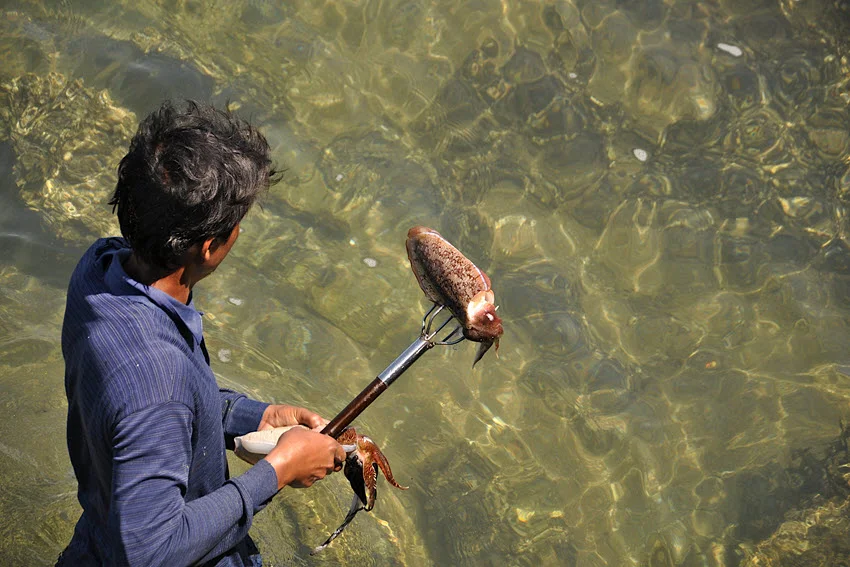
Gigs differ in design and purpose; each type has advantages and specifics. Here are the most commonly used gig types in gigging:
Standard Gig: Even if you've never heard of this technique, you know what this gig looks like; it consists of three prongs evenly spaced around the central bar, allowing for a balance between efficiency and versatility. The prongs are spaced far enough apart to provide a secure hold on the fish and are a good choice for fishing near the bottom in shallow water.
Gig With Teeth: Similar to a standard trident, but with additional teeth or blades to help catch fish more easily. Increases the chances of a successful catch, especially for fish with tough skin or armor.
Double Gig: This type has two pairs of prongs instead of the three usually placed in pairs to increase accuracy. It is suitable for many fish or species requiring precisely targeted attacks. It is also ideal for hunting fish in narrow spaces or among algae.
Wide Gig: Has more widely spaced prongs and is often designed with extra wider "arms" to increase the gripping surface. It will cover larger areas more efficiently and catch fish that move quickly or in larger groups more efficiently.
Gig With Blades: This gig has prongs with additional blades or barbs that help better penetration and hold the fish. It increases the efficiency of catching fish and reduces the possibility of the fish escaping after the first contact.
Gig With Rotating Prongs: It is enriched with prongs that can be rotated or moved, which enables additional flexibility and efficiency when catching fish. It is flexible and can quickly adapt to different fish and water conditions.
Choose a gig made of durable materials such as stainless steel or aluminum, and the size and design of the teeth according to the size of the fish you target. Also, always pay attention to the conditions you will be fishing in.
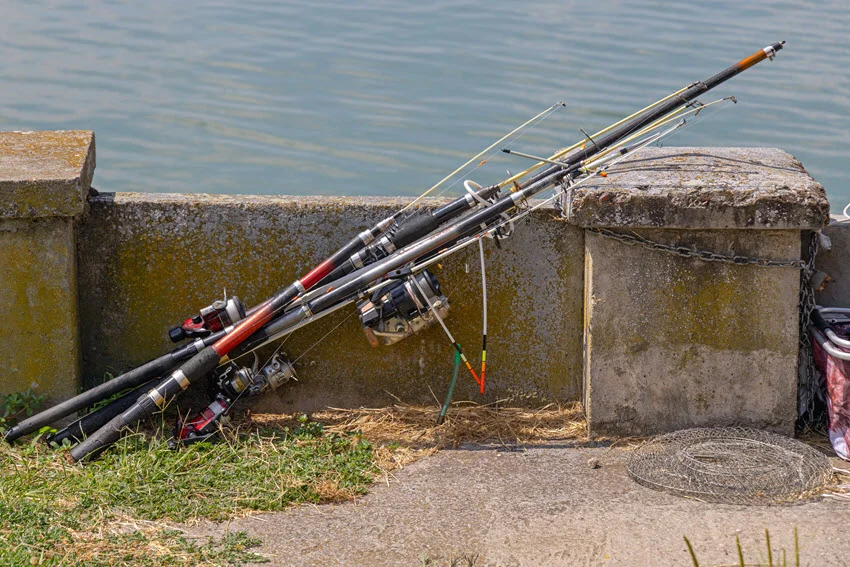
When choosing a pole, you must consider that it fits well in your hand and is strong enough to hold the fish without tiring your hands. Also, the better quality they are, the safer you are. Remember, the gigs can be dangerous, and you can hurt yourself very easily.
Standard Fiberglass Pole: These are popular for their durability and flexibility. At the same time, they are strong enough to withstand the pressure of gigging but also flexible enough for easier management.
Aluminum Pole: This type is light and robust, which makes it suitable for long-term use. They are assembled in several parts, allowing easy storage and transport. Corrosion resistant. They can be adapted to different lengths and configurations.
Telescopic Pole: Can be lengthened and shortened as needed. It enables length adjustment during fishing and easier adaptation to different conditions and gigging techniques.
Carbon Fiber Pole: Carbon fiber poles are extremely light and robust, with high resistance to bending and corrosion. They have minimal weight and high strength that allow better precision and control. Ideal for long-term use.
Adjustable Handle Pole: Features handles that can be adjusted for better comfort and control during use, allowing for personalized comfort and improved grip, which is essential for accurate aiming. It is used when extra comfort and ergonomics are needed, especially during a gigging session.
Pole with Integrated System for Connecting: Comes with integrated systems for faster connection and disconnection of the gig, which allows for quick change and adjustment. It enables quick equipment change and easy handling, which improves efficiency.
Fibreglass and aluminum are good choices for most conditions, while carbon fiber is best for specific needs, providing stability and comfort.
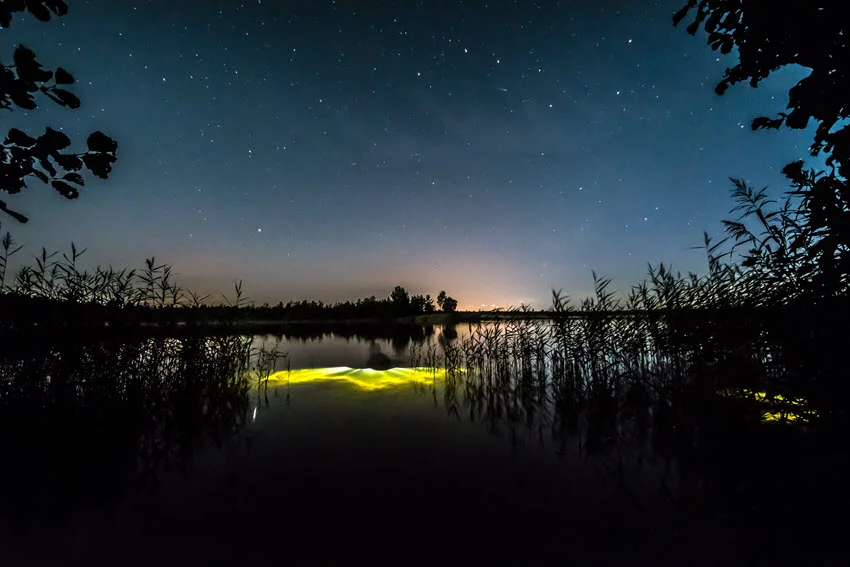
For most fans of this technique, gigging at night is a unique attraction but also much more dangerous. You need light for safety, but also because it attracts fish. Read below which types of light can help you during your night gigging adventure.
Headlamp: This wearable light is placed on the head using a strap. It gives you free hands to manage the gig and other tools. Higher-quality options allow light intensity adjustment, and different modes allow adaptation to various conditions.
Underwater Light: This light is placed in the water to create a light spot attracting fish. It is usually mounted on a tripod or tied to a boat or shore. Attracts fish by creating a light field in the water. It can help with better visibility and attract more fish. It is used in night gigging or low visibility conditions where you want to attract fish and improve visibility in the water.
Wave Light: A type of light that emits light waves or changes in light intensity to simulate natural light conditions in water. It is used for specific techniques and situations where it is necessary to mimic natural light conditions and increase the chances of a successful catch.
LED Light: Energy-efficient and long-lasting lights that emit a strong and constant light source. They can be portable or mounted and adjusted to different intensities and colors of light. It is ideal for various conditions, from night gigging to light signaling and attracting fish.
Filtered Light: This is light that uses filters to modify the color or intensity of the light, such as red or green filters, to adapt to specific needs or conditions. It can reduce reflections and improve visibility in particular situations, such as foggy or cloudy conditions.
Before you decide which type of light to buy, check how long the light can work on one battery to avoid interruptions during fishing. Also, ensure the light is water and corrosion-resistant to withstand water conditions.
The technique focuses on shallower waters but applies to different environments. Whichever location you decide on, remember that you need a solid footing to cast the gig, either from land or a boat.

Gigging in freshwater environments such as lakes, reservoirs, rivers, and streams provides a variety of hunting opportunities. There are many good microlocal spots suitable for night catches and ambushes and installing various lights.
In addition to night gigging, these waters are ideal for gigging during the day, especially in the early morning. In lakes and reservoirs, choose shallow to mid-depth areas, while rivers and streams are perfect for targeting fish in slow currents and sheltered areas.

In marine waters, gigging is often practiced along the coast and beach, in clear and crystal waters where shallow waters are more suitable for this technique. Most of them are rich in structures of docks, piers, and bridges, which are known as rich confluences of various species. These locations are ideal for gigging during different seasons, especially when using light to attract fish.
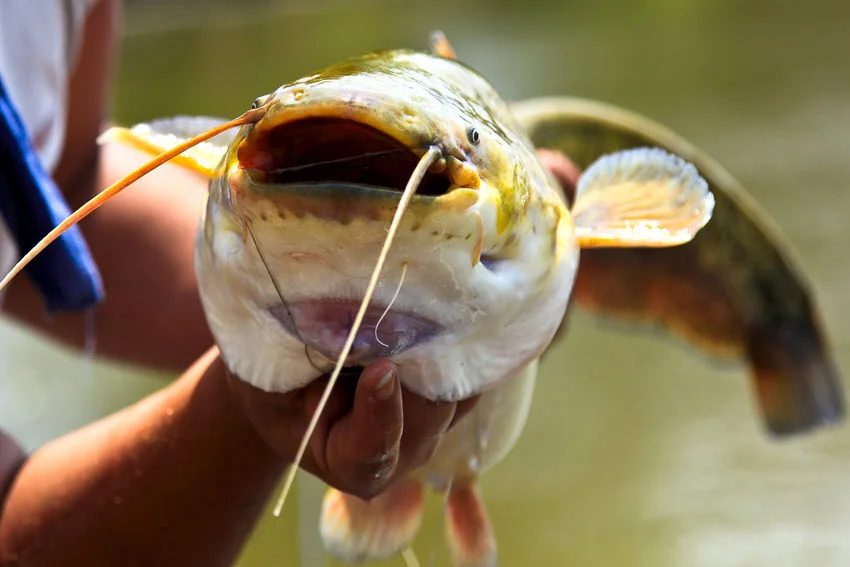
Mangrove coasts and estuaries are rich ecosystems where salt and freshwater mix and attract fish magnetically, as they provide food and shelter. Access to these areas may be difficult, so you must work a little more complicated, but pay attention to the location near the coast with lush vegetation or fallen trees. Gigging in these areas can be very successful due to the high concentrations of fish and the complex habitats that provide natural hiding places for the fish.
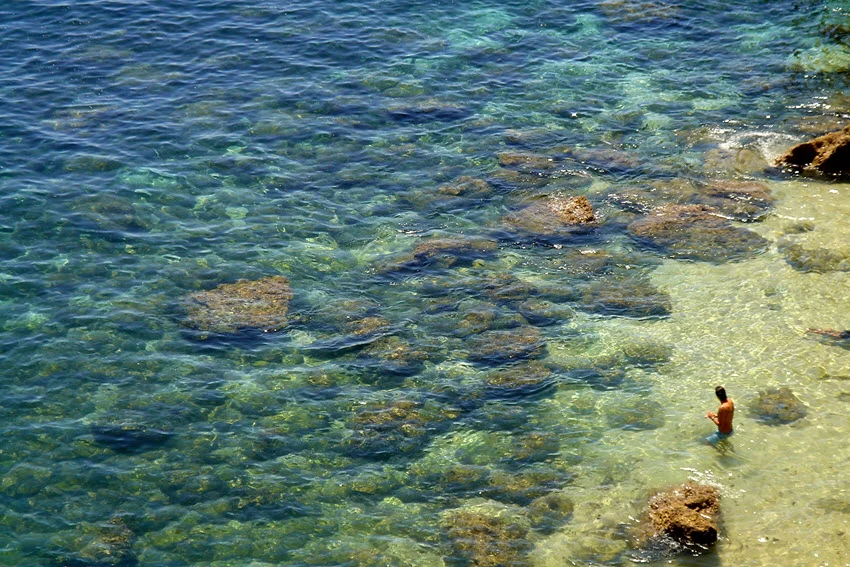
Land routes can often reach protected areas, although there are also inconvenient locations. Shallow and deeper bays are ideal for gigging due to variations in depth and conditions because shallow bays are suitable for fishing in low water levels where fish come to feed.
Deeper coves have a better view and visibility and enable more effective fishing for fish at greater depths. These areas offer different fishing opportunities, depending on the specific water conditions.
Gigging is quite simple, but depending on the circumstances and specific locations, it often requires a slightly different approach and strategy.
In addition to the unique experience of fishing under cover of darkness, many species of fish are more active and come closer to the surface. They are also attracted to light and come towards surface or shallow waters, making it easier to target with a trident. Light can stimulate otherwise less active fish, allowing anglers to focus on areas that are typically harder to reach during the day.
Gigging from floating platforms such as boats or pontoons is mainly used in lakes and inland waters, allowing anglers to move around the water and target fish from different angles. The stable platform allows for easier gig management and better positioning for targeting fish congregating around the structure or in specific zones.
The most famous and most straightforward gigging technique. Safe access to water and areas with low water levels, where fish are often more active and closer to the surface. It has precise gig management and uses light strikes and quick movements to attract fish. Shallow waters are often rich in food and shelter; they are very fish-abundant.
It is difficult to perform and requires a unique approach, using additional weight and specialized equipment to reach greater depths. You will need heavier, more robust gigs, stronger lights, and better protection. It can be extreme, requiring careful crafting strategy and excellent equipment.
You will hardly find a technique that is so unique and exciting as fishing with a gig. At the same time, it is straightforward and primitive and offers plenty of possibilities for enjoyment, from night gigging to specific techniques adapted to shallow or deep waters. However, it is only for some because it is challenging to manage the gig and have enough power to aim it precisely and hit the fish.
In any case, if you are willing to try, why not? And in time you might even become a real expert, plus your physical condition will surely improve. If you've already tried it or you're an experienced gig angler, write us anything you think is worth mentioning, and we didn't do that, and feel free to post pictures in the comment section!
We look forward to seeing you! Happy fishing!

The expert copywriters at Anglers Booking have meticulously crafted this article. Our dedicated team of writers provides valuable insights and information to enhance your angling experience.
Embark on unforgettable fishing adventures with us at Anglers Booking.
book your charterSeptember 29, 2025
September 25, 2025
September 21, 2025
September 21, 2025
September 16, 2025
September 21, 2025
September 8, 2025
September 5, 2025

You're now part of our exclusive community. Get ready for premium content and updates straight to your inbox.
close
Subscribe to our newsletter and receive a selection of cool articles every week.
Please enter a valid email address.

Be the first to know when we're back in action.
Please enter a valid email address.
Leave a Comment
Your email address will not be published. Required fields are marked *
Thank you for your comment! It has been submitted for review and will appear on the site shortly.